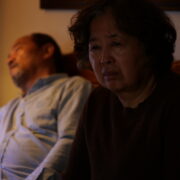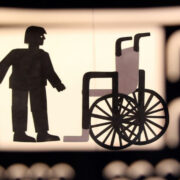DAGUERROTYPE: A Clinical History
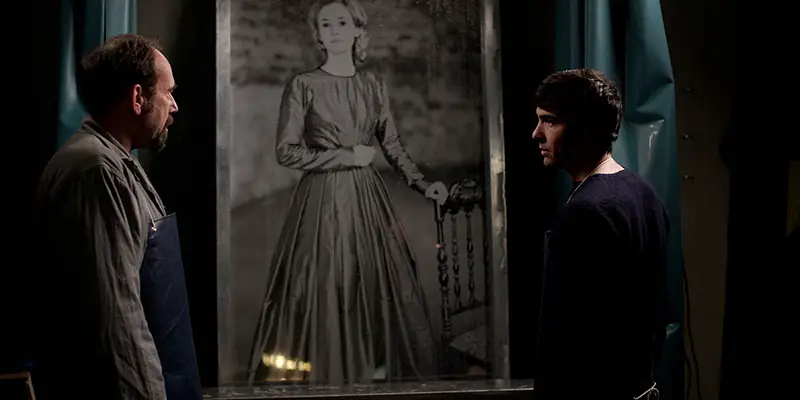
Ben is a former student of cognitive science who is…
When the title card appears in Daguerrotype, it announces the film as “Le secret de le chambre noire“. That title reflects the film’s goals as a dark, foreboding ghost mystery, and it probably does so better than the title “Daguerrotype” does. But what I like about the title Daguerrotype (misspelled though it might be), is that it refers to the most interesting part of the film: the way it refers to older art forms to address both personal and global histories.
The film is partly about the subjects of daguerreotypes, people charged with the job of sitting and waiting for the exposure time to pass while taking a photograph. One of the film’s main characters, a photographer named Stéphane, aims to preserve daguerreotyp-y as an art form, and has taken to creating life-size daguerreotypes. To do this, he needs to immobilize his subjects, and sometimes has them remain immobilized in discomfort and for hours on end.
Hiding on the Fringe
The film opens with a young man named Jean (Tahar Rahim) approaching Stéphane (Olivier Gourmet) to take a job as his assistant. Though all kinds of mysterious phenomena occur in Daguerrotype, the most pressing questions in the film are these: can Stéphane be trusted, or is he hiding something? What exactly is happening to the people around him? And is he responsible for it?
These questions arise from the relationships between the characters, which speaks to their depth (though I would say they ultimately fall into something a little too schematic to be satisfying). Their withdrawn body language is emphasized by placing them far apart, looking away from each other. Most of the film’s major turning points involve people looking beyond the edges of the frame, either searching for answers about the unknown or frightened by something mysterious.
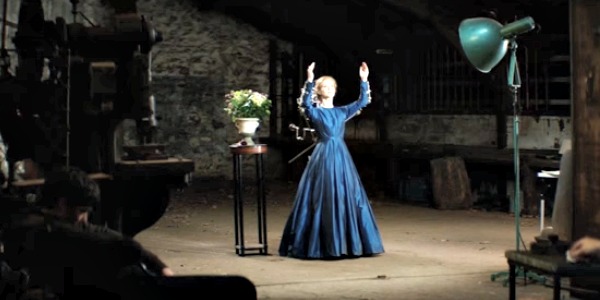
The characters’ failure to acknowledge the people around them, more than anything else, complicates the questions surrounding Stéphane’s character. He’s imperious, self-important, and constantly in a bad mood, so it’s easy to attribute the rifts that arise between him and the other characters to his personality. But Jean is the character who changes the most, and he never seems to get close enough to Stéphane for him to have that kind of influence; Stéphane’s daughter, meanwhile, remains more or less the same.
On its own, this state of affairs doesn’t tell us much, other than that Jean’s character may not be as he first appears. But even if it doesn’t seem as if Stéphane rubs off on him in any obvious way, the film’s narrative structure makes it seem like that (or something similar) still might be the case. It’s cyclical, suggesting that what happens to Jean is at least partly due to history repeating itself – a history Stéphane is also involved with.
Spinning Out
As it turns out, the distance between Jean and Stéphane is where their influence on each other is able to take hold. Their failure to communicate leads to a failure to empathize, and a failure to understand the full scope of what’s happening to them. To the extent that Daguerrotype can be called a horror movie, it’s the kind of horror movie that centers around a “haunted place” – Stéphane’s house. And yet leaving this place behind only proves to make things worse.
But even as Jean and Stéphane struggle with the consequences of their actions and victimize themselves, their ability to change in itself speaks to the fact that they’re not the ones who suffer the most in the film. The characters who Jean and Stéphane ignore and exploit the most end up stuck in time, immobilized and suspended like the subjects of Stéphane’s daguerreotypes.
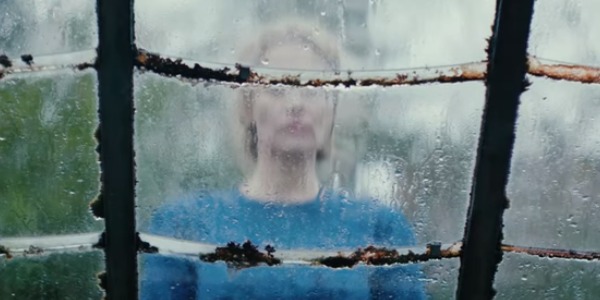
Because the film uses the idea of archaic photography like this, its scope extends beyond just Jean and Stéphane. Their failure to communicate, and all the disaster that comes with it, becomes linked to art. Based on some of director Kiyoshi Kurosawa‘s comments about how he conceived of the film’s plot, it may even refer to forms of art beyond just photography. Kurosawa observed that in western ghost stories and modern J-horror films, ghosts tend to be supernatural tormentors, and they exist as such from the beginning of the story. In traditional Japanese ghost stories, however, ghosts tend to start out as living characters, die, and then return as ghosts to somehow continue their interactions with other characters.
So, the cyclical personal history that affects the characters of Daguerrotype turns out not to be so personal, and the cycle extends much further back than it first appears to. Stéphane and Jean are carrying on traditions of art, as are the subjects of Stéphane’s daguerreotypes. But the intersection of these traditions and their myopic perspectives creates something far worse than either of them could have created on their own.
For better or worse, this is the most interesting thing about the film. The intrigue of the mystery and narrative ellipses eventually wear off, as does the tension engendered by how the composition and performances carry across the coldness between the characters. Once all the details come into focus, the film just isn’t very entertaining, and it even becomes hard to appreciate the characters as much more than instruments for the film’s rather clinical approach to its themes. There’s one scene that’s genuinely terrifying completely on its own merits, but on the whole the film struggles to be suspenseful or threatening.
To Conclude
It’s kind of a shame that Dagerrotype isn’t more successful as a horror film. Obviously it has no obligation to be, but I think it would only help the film’s ideas along. If you ask me, its intersection of different kinds of ghost stories would only be improved if it felt more like a ghost story.
Instead, it’s more of a chamber drama, and a fairly engaging one in its own right. But the film gets in its own way: it starts with a cast of strong characters and incisive observations of their behavior, and ends up reducing them a little too much to the ideas they embody.
At what point does the representation of ideas become too schematic? Does Daguerrotype fall into that trap? Or are the ideas alone enough to carry it?
Daguerrotype will be widely released in Japan and France on October 15, 2016 and November 23, 2016 respectively. More international release dates forthcoming.
Does content like this matter to you?
Become a Member and support film journalism. Unlock access to all of Film Inquiry`s great articles. Join a community of like-minded readers who are passionate about cinema - get access to our private members Network, give back to independent filmmakers, and more.
Ben is a former student of cognitive science who is currently trying to improve his writing style and ability to understand and appreciate films containing unfamiliar perspectives. He tries not to hold films to a strict set of criteria, but does believe that strong movies can change your outlook on the world. His favorite films include Whisper of the Heart, Hellzapoppin', Foolish Wives, 42nd Street, and the work of Charlie Chaplin.




